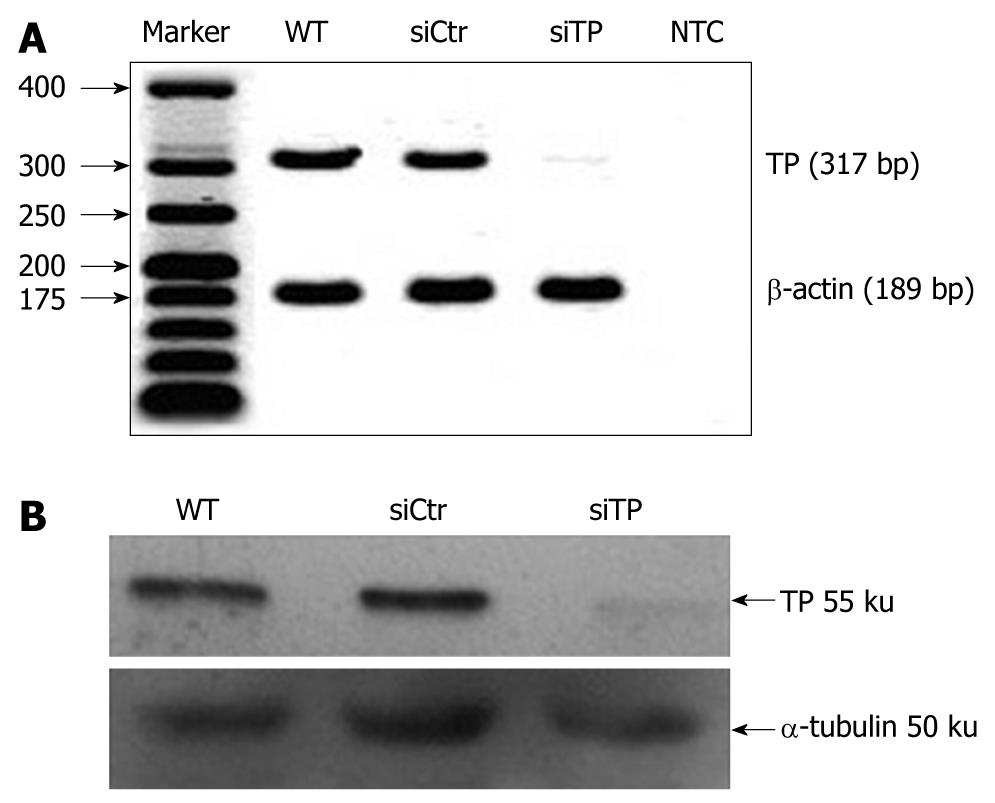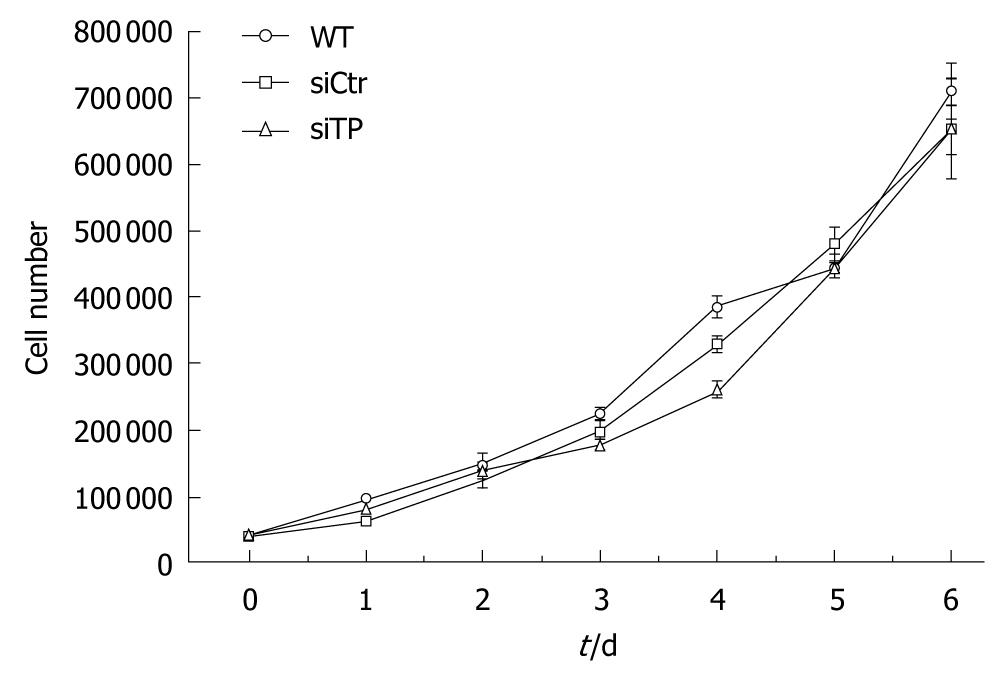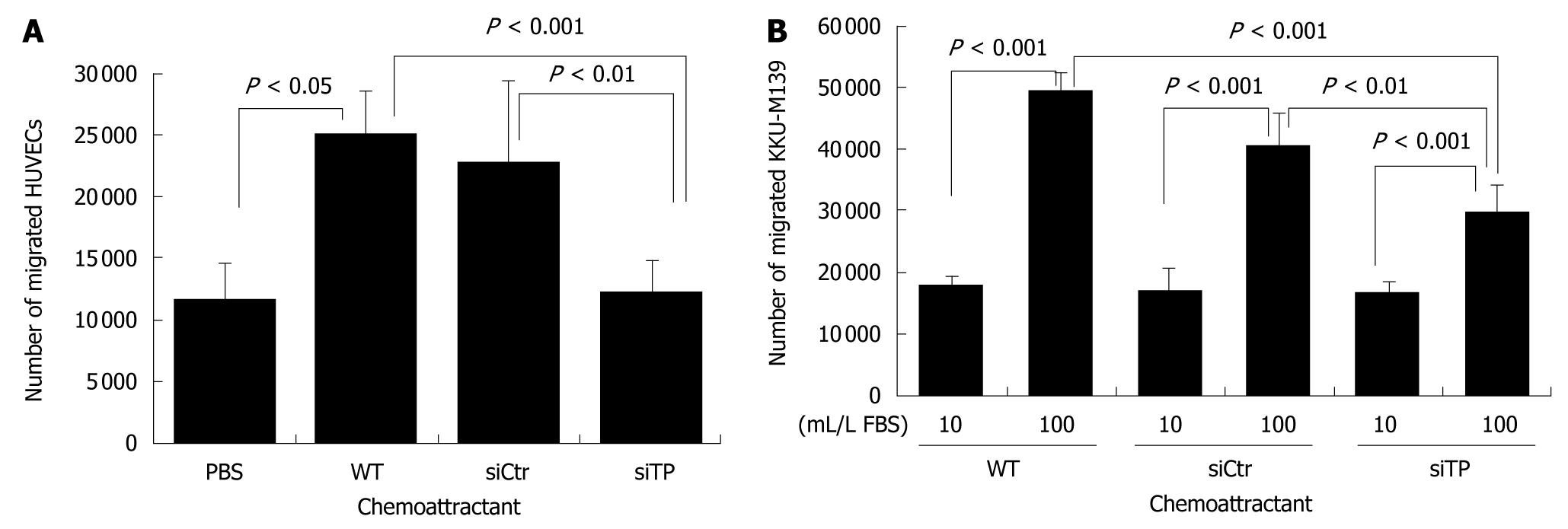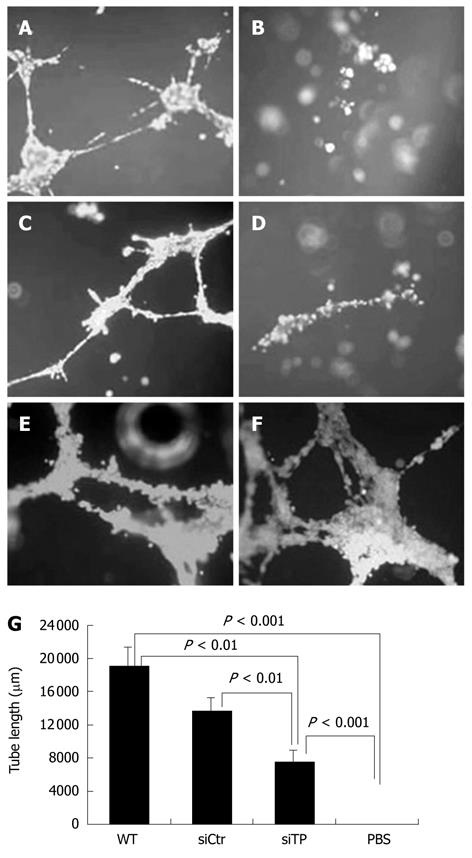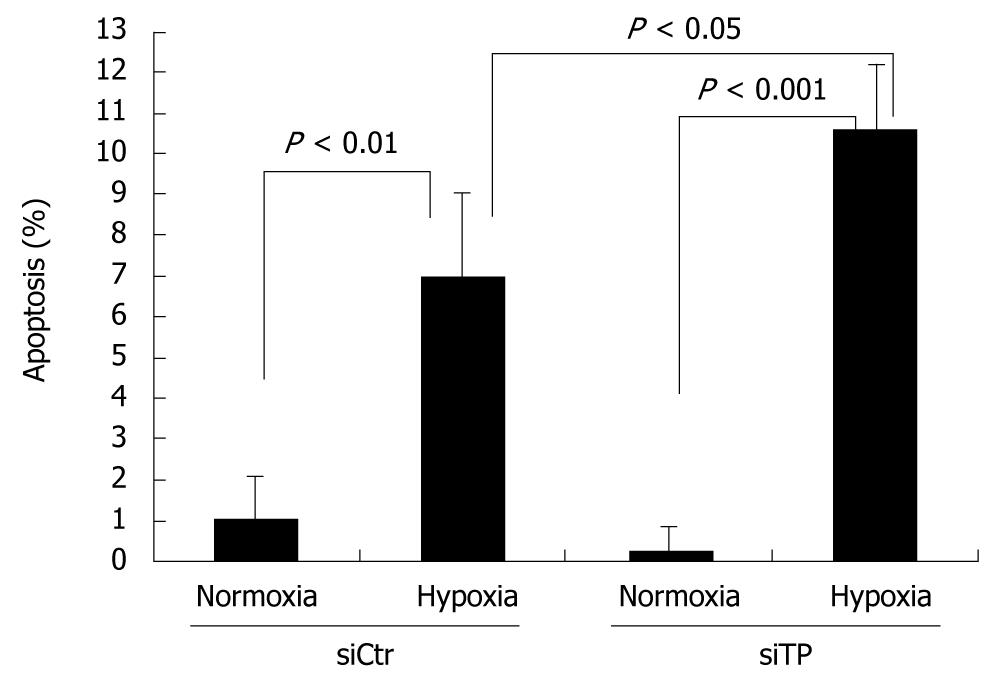Copyright
©2010 Baishideng.
World J Gastroenterol. Apr 7, 2010; 16(13): 1631-1638
Published online Apr 7, 2010. doi: 10.3748/wjg.v16.i13.1631
Published online Apr 7, 2010. doi: 10.3748/wjg.v16.i13.1631
Figure 1 Small interfering RNA (siRNA) significantly reduced thymidine phosphorylase (TP) mRNA analyzed by semi-quantitative polymerase chain reaction (A) and protein (B) analyzed by Western blot of TP-deficient (siTP) cells compared with wild-type (WT) and control (siCtr) cells.
For negative control (NTC), no cDNA was present in the reaction.
Figure 2 Kinetic growth curves of KKU-M139 WT, control (siCtr), and TP-deficient (siTP) cells.
The doubling time of TP-deficient cells was not significantly different from that of WT or control cells.
Figure 3 Knockdown of TP reduces migration of HUVECs and KKU-M139.
A: Migration of HUVECs toward protein produced from TP-deficient cells (siTP) was similar to that of PBS, and 2-fold less than that of wild-type (WT); B: TP-deficient KKU-M139 cells are less migratory in response to FBS compared with wild-type, and control.
Figure 4 Knockdown of TP decreases the formation of tube-like structures in an ECM gel angiogenesis assay.
Serum of endometriosis patients was used as a positive control (A), and PBS as a negative control (B). Total protein of control (siCtr) (C), TP-deficient (siTP) (D), or WT cells (E and F) were assayed. The tube length was quantified (G).
Figure 5 Knockdown of TP leads to increased cell death under hypoxic conditions.
TP-deficient (siTP) or control (siCtr) cells were exposed to normoxic or hypoxic conditions for 48 h. Apoptosis was measured with the TUNEL assay.
Figure 6 Effects of TP-siRNA on 5-fluorouracil (5-Fu) cytotoxicity of KKU-M139.
KKU-M139 WT, control (siCtr), and TP-deficient (siTP) cells were incubated with various concentrations of 5-fluorouracil for 48 h. Sensitivity of the cells to 5-fluorouracil was then determined with a MTS cytotoxicity assay.
- Citation: Thanasai J, Limpaiboon T, Jearanaikoon P, Sripa B, Pairojkul C, Tantimavanich S, Miwa M. Effects of thymidine phosphorylase on tumor aggressiveness and 5-fluorouracil sensitivity in cholangiocarcinoma. World J Gastroenterol 2010; 16(13): 1631-1638
- URL: https://www.wjgnet.com/1007-9327/full/v16/i13/1631.htm
- DOI: https://dx.doi.org/10.3748/wjg.v16.i13.1631









